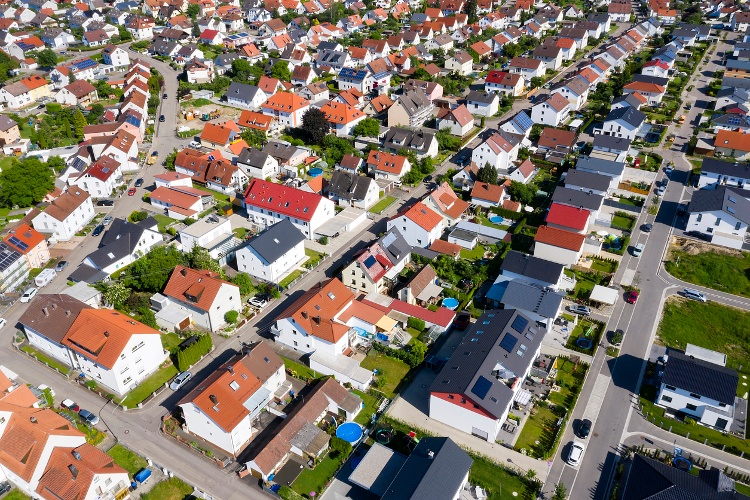One of the biggest mistakes that real estate investors make is to underestimate vacancy rate.
It’s tempting to use the market average when calculating vacancy rate for a property pro forma. But the fact is that vacancy rates can and do vary from market to market, and even from neighborhood to neighborhood.
Using the wrong vacancy rate can negatively affect the financial performance of a rental property as well as the market value.
In this article we’ll discuss what vacancy rate is, why vacancy rate matters to investors, and how to use vacancy rate to increase the market value of a property.

What is a Rental Vacancy Rate?
Vacancy rate is expressed as a percentage and compares the amount of time a property could be rented to the amount of time a property was actually rented. Vacancy is normally measured over a one-year period.
Rental real estate can be vacant due to a number of factors including:
- Unit turn time can cause vacancy between one renter moving out and another renter moving in.
- Vacancy can occur due to major repairs or updating.
- Property located in an undesirable area is harder to rent, creating a greater number of days vacant.
- Rental rates above market can also make property difficult to rent, increasing the total number of days a property sits vacant on the market.
Vacancy rate formula
Here’s the basic formula to calculate vacancy rate:
- Vacancy Rate = Number of Days Vacant / Number of Rentable Days
If an investor has one single-family rental and the property is vacant for three weeks out of the year, the vacancy rate would be:
- 21 days vacant / 365 days per year = 5.8%
How to calculate portfolio vacancy rate
We can also calculate the vacancy rate for an entire rental property portfolio. For example, let’s say an investor has a portfolio of five single-family rental homes with the following vacancies:
- Home #1: 0 days vacant
- Home #2: 30 days vacant
- Home #3: 5 days vacant
- Home #4: 21 days vacant
- Home #5: 9 days vacant
- Total: 65 days vacant
The formula to calculate the portfolio vacancy rate is:
- 65 days vacant / 1,825 days (365 days per year x 5 homes) = 3.6%
How to calculate occupancy rate from vacancy rate
Occupancy rate is the opposite – or the inverse - of vacancy rate. When properly calculated, adding the vacancy rate to the occupancy rate will equal 100%.
The occupancy rate for our investor with one single-family rental is:
- 344 days occupied (365 days – 21 days vacant) / 365 days per year = 94.2% occupancy rate
The occupancy rate for our investor with a portfolio of five single-family rental homes is:
- 1,760 days occupied ((365 days x 5 homes = 1,825 days) – 65 days vacant) / 1,825 days per year = 96.4% occupancy rate

How to Find a Market Vacancy Rate
There are three main sources that rental property investors use to find market vacancy rate:
U.S. Census Bureau
The Census Bureau publishes a report of Quarterly Vacancy and Homeownership Rates by State and MSA. Through Q2 2019, vacancy rates were less than 3% in markets such as Boston and Cleveland, while Austin and Cincinnati had quarterly vacancy rates higher than 9%.
Property Managers
Property managers who focus on managing and leasing single-family rental property can usually give you a more accurate idea of market vacancy rate than real estate agents or the Census Bureau. The best property managers can also give you vacancy specifics down to a neighborhood, building, or street level to help make your evaluation of rental property performance as accurate as possible.
Real Estate Agents
Real estate agents and brokers who specialize in working with rental property investors are a great source for real-time market data. Agents can access the local MLS to generate a list of active rental listings, days on market, and the ratio between asking rent and actual rent.
What Does Vacancy Rate Indicate?
In general, a low vacancy rate means a property is more desirable and indicates that people want to live in the property or the neighborhood. On the other hand, a high vacancy rate usually means a property is in an undesirable area or is outdated and in need of repair.
Real estate investors use vacancy rate to compare similar properties in the same neighborhood or market. That’s because vacancy rates can and do vary from market to market.

Why Vacancy Rates Vary From Market to Market
Vacancy rates are a main indicator of the strength of individual rental markets and are influenced by supply and demand. For example, a market with a high vacancy rate may have an oversupply of rental units. This in turn creates a higher investment risk, because houses may take longer to rent, and market rents may be lower than anticipated.
Factors that cause vacancy rates to vary from market to market include:
- Business expansion or contraction based on the local economy
- Job growth created by business expansion, or job loss due to business closures
- Disposable income changes based on employment levels, affecting the demand for rental property
- New apartment construction leading to overbuilding which temporarily puts downward pressure on market rents and causes vacancy rates to rise over the short-term
- Interest rates which encourage more people to buy rather than rent if rates are low, and create more demand for rental property as rates rise or homeownership becomes less affordable
- Zoning regulations in some markets making new development difficult and expensive, and causing rents to rise and vacancies to decrease.
How Vacancy Affects Other Rental Property Calculations
Vacancy has a direct affect on rental income. The more time a property is vacant, the lower the gross rent collected is, and the less valuable a property will be to an investor.
Other real estate calculations used to determine property value that are affected by vacancy rate include:
Cash flow: The amount of money remaining after all expenses, including the mortgage, have been paid.
NOI: Net operating income is the total of all rental income less vacancy loss and operating expenses but not including the mortgage payment.
- NOI = Rental income + Other income – Vacancy loss – Operating expenses (except mortgage payment)
Cap rate: A ratio that compares NOI to property value.
- Cap Rate = NOI / Property value
GRM: Gross rent multiplier compares the gross rents received to property value.
- GRM = Property price / Gross annual rental income
ROI: Measures the annual return of an investment compared to the total amount invested. ROI varies based on the amount of cash invested or size of the down payment made, and the debt or mortgage used to purchase a property.
- ROI = Annual return / Total investment
Cash-on-cash return: Measures the cash income received compared to the cash invested.
- Cash-on-Cash Return = Annual pre-tax cash flow / Total cash invested
Two different valuations: Income vs. sales
All of the rental property financial metrics above use the income approach to determine property value. On the other hand, the sales comparison approach considers the prices of similar properties based on property size, or price-per-square foot.
For the single-family rental investor, the income approach and the sales approach can sometimes result in different values for the same property. Let’s use the following single-family home as an example:
- House size: 1,000 sq. ft.
- Sales comps: $130 / sq. ft.
- Market rent: $800 / month
- Operating expenses: $150 / month
- Vacancy rate: 7%
- Market cap rate: 6%
Based on the sales valuation approach, the fair market value of the house is: 1,000 sq. ft. x $130 per sq. ft. = $130,000 fair market value.
But what is the fair market value of the house to the rental property investor? To answer this question, we’ll calculate the NOI and then the market value of the home using the cap rate formula:
- NOI = Gross income – vacancy loss – operating expenses
- NOI = $9,600 Gross Income ($800 per month x 12 months) - $672 ($9,600 x 7% vacancy rate) - $1,800 Operating Expenses ($150 per month x 12 months) = $7,128 NOI
Now let’s use the cap rate formula to determine the market value of the house to the income property investor:
- Cap rate = NOI / Property value
- Property value = NOI / Cap rate
- $7,128 NOI / 6% market cap rate = $118,800 market value of the house to an investor
Note that without factoring in the vacancy rate, the market value of the property would be the same using the sales valuation approach and the cap rate calculation:
- $7,800 NOI ($9,600 Gross Income - $1,800 Operating Expenses) / 6% market cap rate = $130,000
However, by including the vacancy rate of 7% the market value of the house for the single-family rental investor is $118,800. That’s $11,200 or about 9% less than the market value using the sales comparable approach.

How to Keep Vacancy Rate Low
As we can see from the above example, the lower the vacancy rate the higher the property’s market value will be. Ways to keep vacancy rate low include:
- Market vacant units using multiple online and offline sources like Zillow, Craigslist, signage, and bulletin board advertising.
- Maximize curb appeal, the first impression prospective tenants have when they see a rental, by keeping the landscaping neat and trim.
- Screen tenants to keep turnover low and reduce the odds of late or non-payment of rent.
- Proactively reach out to tenants before the lease is up for renewal, offering a non-cash incentive to sign a new lease if the rental market is slow.
- Plan unit turns ahead of time so that any needed repair work and updating can begin the day the tenants leave.
Wrapping Up
Vacancy rate has a direct affect on how much income a rental property generates, which in turn affects the ability to finance the property and pay the mortgage, and ultimately the market value of the property.
Important things to remember about vacancy rate are:
- Vacancy rate is expressed as a percentage and compares the days a property could be rented to the days the property was actually rented.
- Vacancy is created from the time it takes to turn a property between tenants, if a property is in an undesirable area, or if the asking rent is above market value.
- Vacancy rate can be calculated for individual properties and for an entire rental property portfolio.
- Financial metrics affected by vacancy rate include cap rate, ROI, GRM.
- Sources for determining vacancy rates by market are the U.S. Census Bureau, property managers, and real estate agents.
- Strategies for keeping vacancy rate low include properly screening prospective tenants, keeping the property in good repair, and planning unit turns ahead of time to minimize downtime between tenants.









